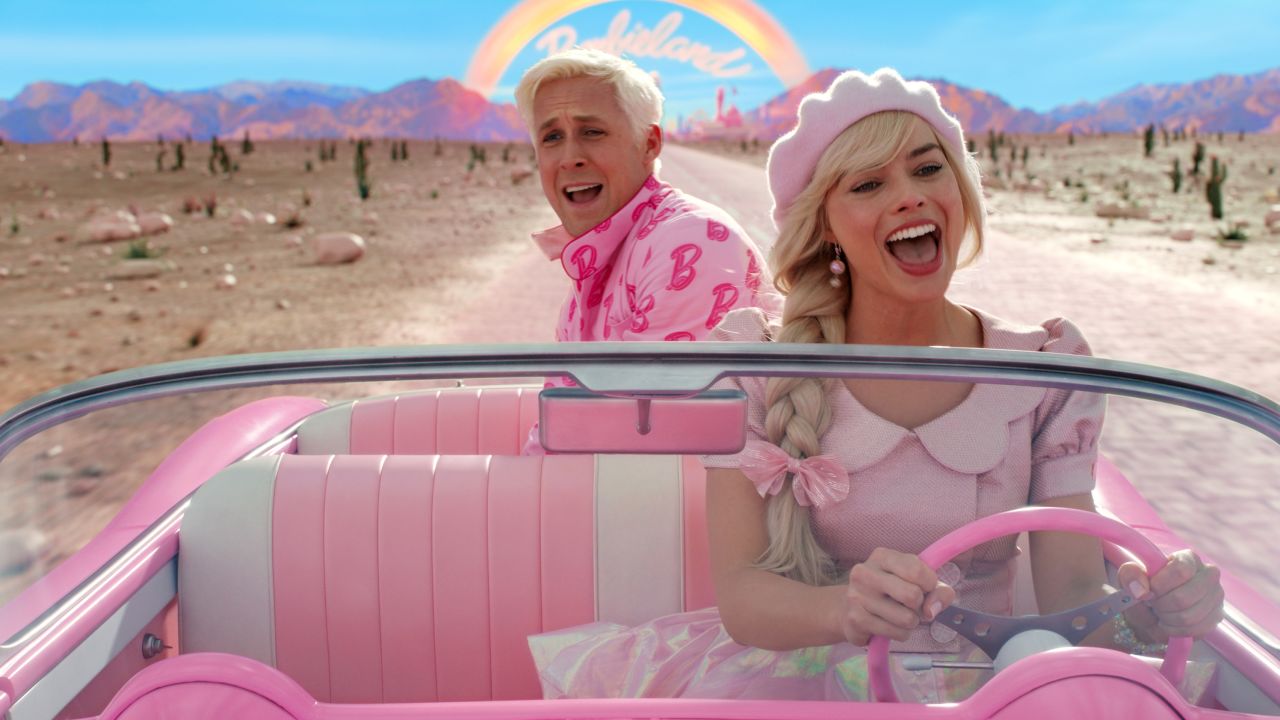The Margot Robbie-Ryan Gosling “Barbie” won over audiences at the box office with its fashionable icon’s journey from Barbieland to the human world – and from existential crisis to enlightenment.
If you can’t get enough of absurdist comedy, identity crises, colorful scene design or stylish wardrobes, consider a few classic films from the Golden Age of Hollywood that scratch some of the same itches of 2023’s summer all-star “Barbie.”
What else would you suggest? Share with @ReelOldMovies on Instagram
‘The Red Shoes’ (1948)
Critics and audiences have lauded “Barbie” for its set design and innovative color palette. “The Red Shoes” is the height of a color-saturated screen experience. The plot also echoes some of the same themes of “Barbie.” A ballerina faces a world in which she is forced to choose between her passion for her art and her love for a composer. The 1948 drama has been celebrated since its release for its use of Technicolor, with director Martin Scorsese calling it one of the most beautiful color films in history.
Watch a scene from 'The Red Shoes' (YouTube)
‘Pillow Talk’ (1959)
Barbie and Ken have their ups and downs and if good ol’ fashioned rom-com banter is your thing, “Pillow Talk” delivers. Doris Day and Rock Hudson trade fast-paced quips on their way to falling in love amid glamorous 1950s interior design sets and colorful fashion.
‘Funny Face’ (1957)
If you can’t get enough of Barbie’s wardrobe, check out another style icon on the screen in 1957’s “Funny Face.” Audrey Hepburn stars as a bookstore worker turned supermodel, and the rom-com musical features a series of iconic costumes against the picture perfect backdrop of Paris in the 1950s.
‘Duck Soup’ (1933)
Mythical countries, zany antics, absurdist comedy: “Barbie” has Barbieland and the Marx Brothers have Freedonia in the comedy classic “Duck Soup.” Groucho plays the leader of a fantastical land who ends up going to war with a neighbor in the political farce, which features the surreal “mirror scene.”
‘The Philadelphia Story’ (1940)
In “Barbie,” the icon navigates her existential crisis to enlightenment, as well as her relationship with Ken. “The Philadelphia Story” carries some of the same themes. Katharine Hepburn plays an icy socialite whose persona begins to melt as she questions who she is and her choices in life in this witty romantic comedy, also starring Cary Grant as her ex-husband with whom she has a push-pull relationship, and James Stewart as a tabloid journalist who holds her up as a model of perfection.
‘The Wizard of Oz’ (1939)
Maybe you’ve seen the Judy Garland classic, but a re-watch of “The Wizard of Oz” through a “Barbie” lens reveals some cinema similarities: The main characters both leave their homelands to travel to a fantastical place (for Barbie, that is the human world), where they are on journeys to discover something about themselves.
Apart from plot and themes, the look of Oz may satisfy any leftover cravings from “Barbie” set design. It’s not a coincidence. In an interview with Letterboxd, “Barbie” director Greta Gerwig cites “The Wizard of Oz” as an influence on the look and feel of her movie. “It does something that I wanted to emulate, which is these incredible sound stages and these painted skies and this sense of… I say, ‘authentically artificial,’ which I think is very beautiful and emotional,” she said. “I think of the painted backdrop of the Emerald City as they go towards it. In our movie, we have the Pink Brick Road instead of the Yellow Brick Road. We also have beautiful painted backdrops of horizons. We executed it like they would’ve done in the ’30s and ’40s and ’50s soundstage musicals.”
‘Neptune’s Daughter’ (1949)
Technicolor comedy and splashy musical numbers – in water! – are staples of any Esther Williams movie and “Neptune’s Daughter” delivers. The swimming star plays an aquatic ballet dancer who gets involved with a polo player. Mixed-up identifies, zany comedy and love ensue before a climactic aquatic musical number, complete with high dives, synchronized swimming and water dancing.
‘Planet of the Apes’ (1968)
What does “Barbie” have in common with the Charlton Heston-starring “Planet of the Apes” movie? Like “Barbie,” the 1968 sci-fi fantasy includes a look at social classes and the clashes that erupt. While “Planet of the Apes” uses apes and its caste system for its commentary on social equality and inclusion, “Barbie” uses the male/female dolls and Weird Barbie and other outcast figures to address matriarchy, patriarchy and societal classes.
****
Popular on ReelOldMovies.com
- • Here’s looking at you, ‘Casablanca’: The most quoted movie turns 80
- • Rediscovering 1923's 'The Ten Commandments' and deMille's 'lost city' set
- • ‘It’s a Wonderful Life’: Why the 1946 classic movie continues to inspire
- • What would classic Hollywood stars wear to the Oscars today?
- Instagram | TikTok | Mastodon | YouTube | Google News
